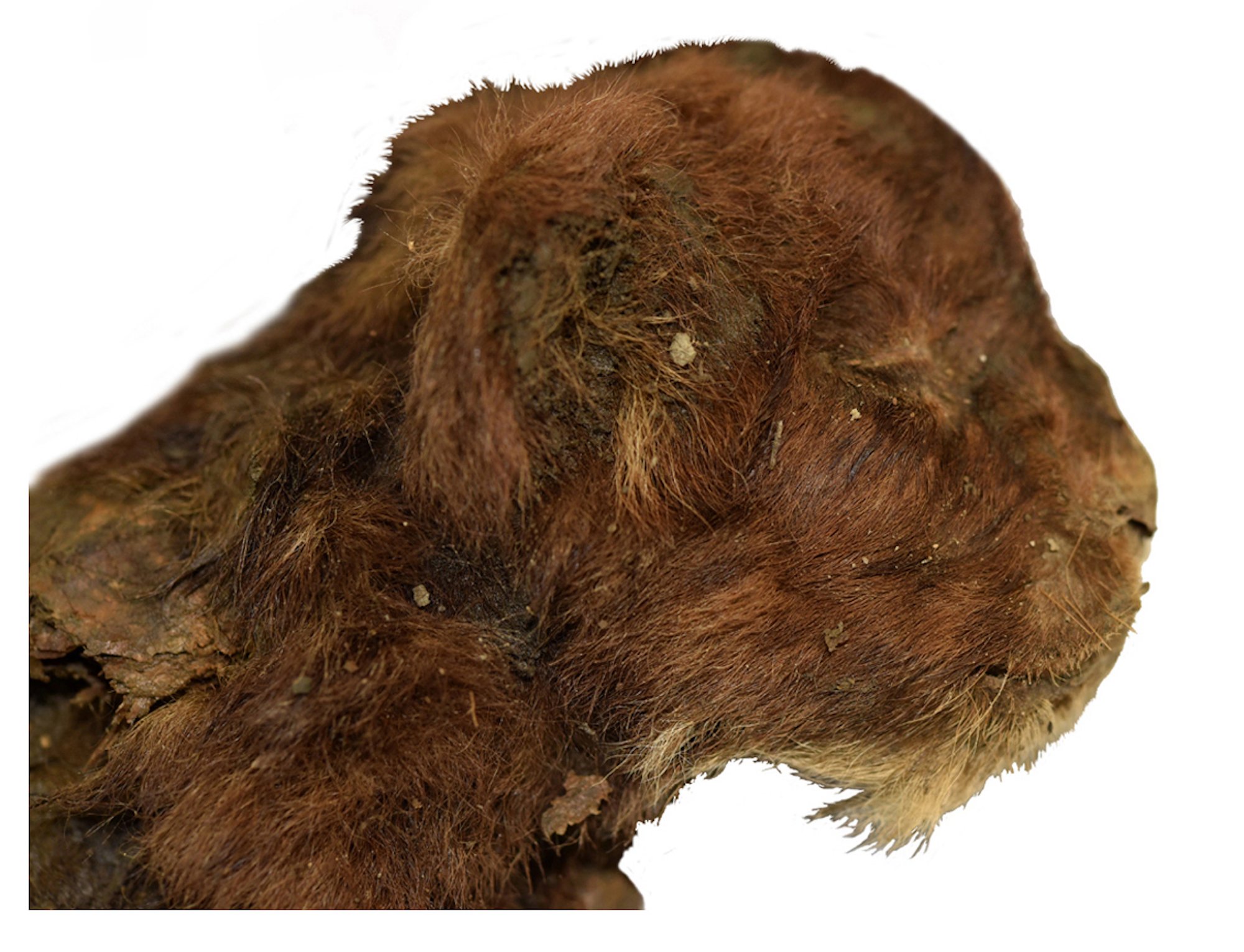
Scientists have unveiled the discovery of a saber-toothed cub, almost perfectly preserved in Siberian permafrost, found four years ago.
New research about the ground-breaking mummy was released last week in Scientific Reports. It is the first time humans have set eyes on this animal since its extinction around 12,000 years ago.
The mummy was discovered during an expedition in eastern Siberia led by Alexey Lopatin, a paleontologist at the Borissiak Paleontological Institute and the lead author of the Scientific Reports paper. The team was originally searching for mammoth tusks. It was delivered swiftly to Moscow’s Academy of Sciences where investigations began in 2020. Lopatin described the experience in an interview: “It’s a fantastic feeling to see with your own eyes the life appearance of a long-extinct animal, a saber-toothed cat cub.”
Nicknamed the Badyarikha Mummy, the remains include the animal’s front half, remarkably preserved with soft, thick brown fur. Researchers called the preservation of its fur “the most surprising” aspect of the discovery. Additional pelvic and leg bones were found in the same block of ice. It was found in the Russian Republic of Sakha, also called Yakutia, on the Badyarikha River, after which it has been given its nickname. It is unclear how the young animal met its end, given the segmentation of its body.
Homotherium latidens (2024). Image courtesy of Professor A. V. Lopatin.
It is extremely rare to find such highly preserved remains of mammals from so long ago (the Late Pleistocene era, when mammoths last walked the earth and the earliest cave art was made). Previous research into these animals has been done using only bones or fossils.
CT scans were done to confirm the animal’s species—Homotherium latidens—the final line of saber-toothed cats on earth. Homotherium latidens died out over 10,000 years ago after the end of the last ice age, having been prevalent across the Americas, Africa, and Europe. The Badyarikha Mummy’s discovery in Siberia confirms the animal’s presence in Asia, too.
Radiocarbon dating found that the cub lived between 35,471 and 37,019 years ago, and comparative research was done with the modern remains of three-week-old lion cub—Pathera leo—to help age the animal and highlight the “significant differences” between the two species. The quality of the animal’s preservation, which meant its front half was still covered in muscle and flesh, allowed it to be compared side by side with the lion cub. Researchers were able to see in detail the shape and size of the animal including the details of its paws with sharp claws. In comparison to the lion, the mummified saber-toothed cub had a longer and significantly thicker (doubly so) neck, as well being considerably stockier with shorter legs and a broader body. The cub had a wide upper lip and an enlarged premaxillary bone in its upper jaw which would have allowed for two large protruding incisors (after which “saber-toothed” animals are named) to grow in the animal’s adulthood.
Homotherium latidens’ paw (2024). Image courtesy of Professor A. V. Lopatin.
Researchers found that the cub has been preserved at around 3 weeks old. It was the emergence of its baby incisor teeth which allowed researchers to estimate the animal’s age. The cat had square pads on its feet—unlike the round ones of modern cats—and was found to have have no carpal pads on its wrists, which may have developed to help them make their way across snowy tundras. With no modern descendants, the Badyarikha Mummy allowed an extinct mammal “that has no analogues in the modern fauna” to be studied directly “for the first time in the history of paleontological research.”
The researchers are planning to study the DNA of the Badyarikha Mummy, and are hopeful that they may be able to discover other Homotherium remains in the region.